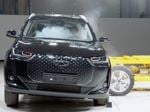One sector of the commercial vehicle market that we are watching closely is the so-called large panel van sector, with gross weights of 3,000-3,500kg. Registrations of these derivatives have been rising rapidly over recent years, with the percentage of vans sold compared to chassis-cab versions increasing dramatically.
This trend is led by continued strong consumer demand in the home delivery market, as well as the prevalence of 'just-in-time' systems in manufacturing.
The downside to this success is that it will result in oversupply in the used market in two to three years' time.
There are relatively few trades that will require used vans of this size, with most preferring the smaller vans of about one tonne payload.
Large vans are mainly used by organisations that only operate new vehicles, often supplied by leasing companies, some of which only dispose of their ex-contract vehicles through the auctions.
In addition to the problem of a restricted target market, we are only forecasting moderate growth in the UK economy over the next two to three years. Combined with the large quantities of these vans entering the used market, this will put the brakes on used values.
The sector will also suffer from the image of 'white van man' chasing down the motorway in the outside lane at 90mph. Many large vans are used for courier and parcels work and can cover high mileages, sometimes at high speed. This will not help residual values.
Manufacturers do not make the situation any better. Most offer a myriad of variations, with two or three wheelbases, roof heights and engine options. Despite all this choice there are many instances of component sharing – in some cases it is only the badge on the front of the van that appears to be different.
This makes it difficult for used van buyers to decide which variant is the best for their business and indecision results in lower prices.
In line with the current trend, power outputs have increased dramatically, with engines developing 160bhp. Vehicles with this amount of power inevitably have increased brake wear, impaired fuel economy, tyre wear and other damage. Used van buyers will be conscious of this and could be wary of committing themselves to purchasing what may become a liability.
The most popular vehicles have outputs in the region of 100-125bhp, providing the best compromise between performance and running costs. Dealers should avoid stocking vans with excessive power outputs.
All these factors combine to depress prices and great care must be taken when considering future residual values. Retailers should try to predict the future and consider what will be most popular at disposal time before specifying their vehicles.












Login to comment
Comments
No comments have been made yet.